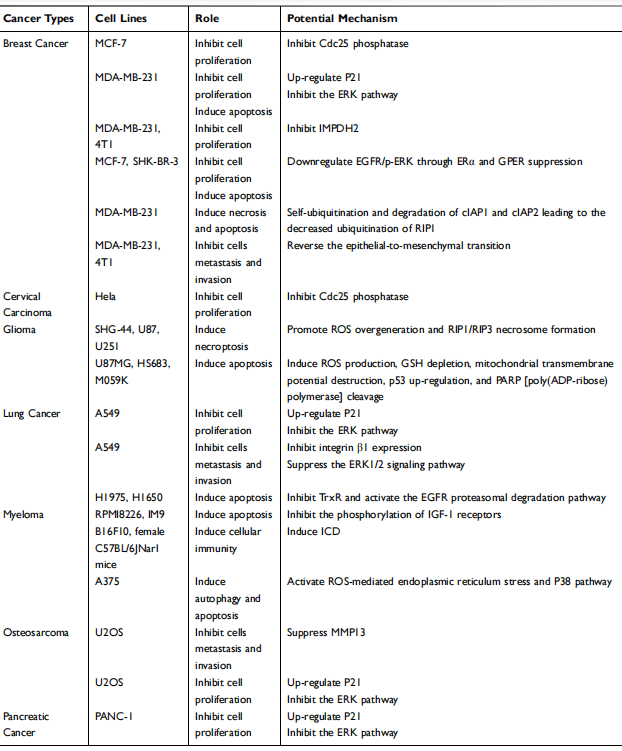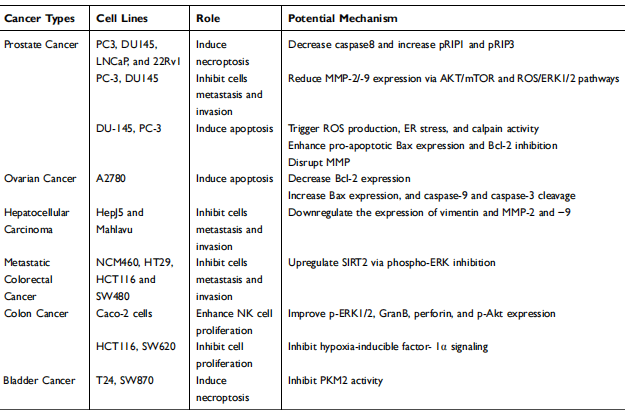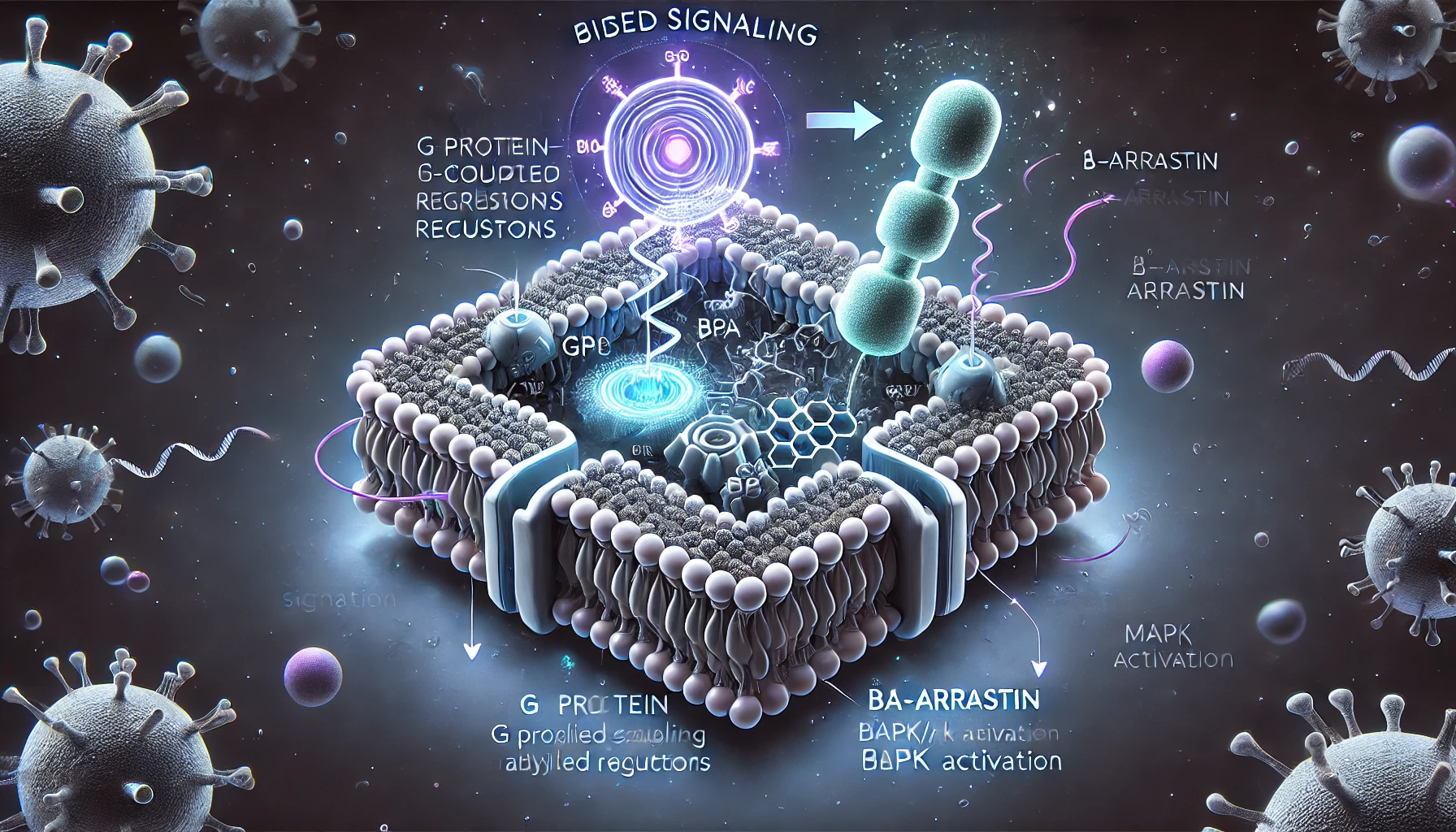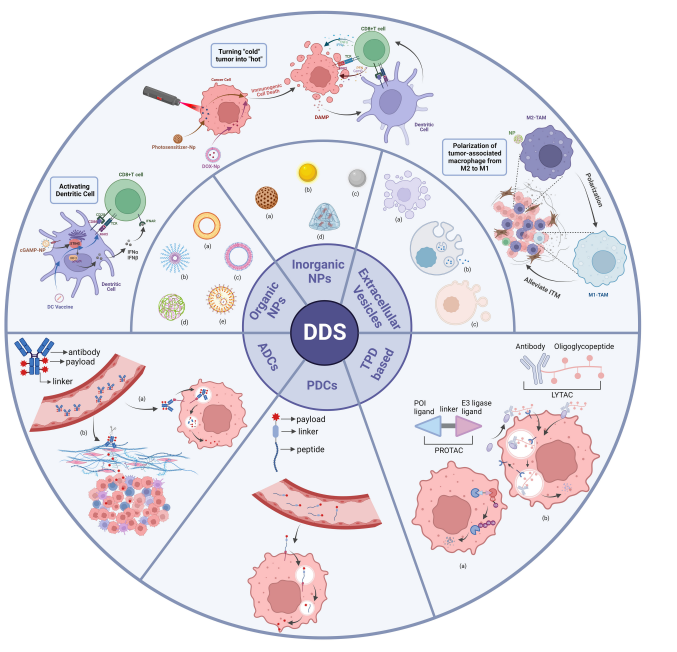What is the Use of Shikonin?
Abstract
Shikonin, from the Lithospermum erythrorhizon plant, has therapeutic properties and is used in Chinese medicine. It has anti-tumor, anti-inflammatory, and wound-healing properties, among other biological and pharmacological effects. This paper summarizes Shikonin’s chemical properties, traditional uses, pharmacological effects, potential therapeutic applications, mechanisms of action, and safety in animal and human studies. Its medicinal properties make it a promising candidate for further research in treating diseases.
Introduction
Shikonin is a natural compound derived from the Lithospermum erythrorhizon plant in East Asia, with therapeutic properties used in traditional Chinese medicine. It has a broad range of biological activities and pharmacological effects, including anti-tumor, anti-inflammatory, and wound-healing properties. Extensive research has been conducted on Shikonin’s chemical properties, mechanisms of action, and safety, making it a promising candidate for treating various diseases. Its medicinal properties, such as anti-tumor, anti-inflammatory, and wound-healing effects, make it an attractive candidate for further research and development in medicine.

Figure1 Structure of shikonin
Pharmacological effects of shikonin
Shikonin is extracted from Lithospermum erythrorhizon and presents a purple-red quinone natural pigment. Shikonin derivatives include acetyl shikonin, isovaleryl shikonin, deoxy shikonin, etc. Shikonin has become an important source of pigments due to its special structure and pharmacological effects and is widely used in the food and pharmaceutical industries.
Anti-inflammatory effect
Shikonin displays robust anti-inflammatory properties by impeding the synthesis of leukotriene B4 and 5-hydroxyeicosatetraenoic acid, which are inflammatory mediators. This natural compound possesses the potential in assuaging inflammation-linked ailments, including asthma, arthritis, and inflammatory bowel disease. However, the precise dosage and mode of shikonin administration to maximize its therapeutic benefits necessitate further investigation. Furthermore, additional research is vital to comprehending the molecular pathways responsible for shikonin’s anti-inflammatory effects, which could facilitate the development of innovative and efficacious treatments for inflammatory diseases.
Antiviral effect
Levoshikonin was studied for its ability to combat the parainfluenza virus using blood cell agglutination reaction and cytopathic methods. The results indicate that levoshikonin demonstrated significant anti-influenza virus activity in vitro and directly inhibited the parainfluenza virus, with minimal toxicity observed at the concentration range tested. These findings suggest that levoshikonin has the potential as a therapeutic agent for parainfluenza virus infection. Nevertheless, further research is necessary to assess its effectiveness in vivo and to determine the optimal concentration and dosing schedules of levoshikonin for the treatment of parainfluenza virus infections.
Antibacterial activity
Candida albicans is the most common conditional pathogenic fungus in clinics, which generally exists in human skin, mucosa, and other parts. When the body’s immune function is reduced or the micro-ecological environment of its host site is disordered, Candida albicans will multiply in large quantities, causing skin, mucosal or visceral infections. At present, the drugs used to treat Candida albicans in the clinic are mainly azoles and polyene antibiotics, but these drugs have certain toxicity, and the drug resistance of Candida albicans is increasing after long-term use. Scientists have found that shikonin has a strong inhibitory effect on Candida albicans.
Antitumor effect of shikonin and its derivatives
Shikonin exhibits potent anti-tumor properties and modulates immune function, presenting promising potential as a chemotherapy adjuvant. Its ability to inhibit colon cancer proliferation has been particularly noteworthy. Combining shikonin with fluorouracil, cisplatin, or anti-APRIL therapy may effectively curb the increased proliferation of residual cancer cells. Furthermore, shikonin induces apoptosis in various tumor cells, thus offering an attractive therapeutic option for cancer treatment. In addition to shikonin, certain derivatives of the compound possess anti-tumor effects as well. One such derivative, β-hydroxyisovalerylshikonin, exhibits potent anti-tumor activity. Another derivative, acetyl shikonin injection, is a naphthoquinone pigment compound produced via advanced plant cell culture and modern technologies, and it also possesses anti-tumor properties.
Table 1 The Anti-Cancer Activity of SHK in vitro[4]


The research on shikonin and its active components has advanced considerably, and the compound is multipurpose in nature. As scientists continue their investigations, it is expected that shikonin’s potential applications will expand further.
Mechanisms of action of Shikonin in different diseases:
Shikonin’s mechanisms of action in different diseases are complex and involve multiple pathways. In cancer, Shikonin activates caspases and disrupts mitochondrial function to induce apoptosis. It also inhibits cell proliferation by blocking the cell cycle at various stages. This is achieved through the modulation of multiple signaling pathways, including the PI3K/AKT, MAPK, and Wnt/β-catenin pathways.
In inflammation, Shikonin inhibits the production of pro-inflammatory cytokines and chemokines by blocking the activation of NF-κB and other signaling pathways. It also has antioxidant properties and can scavenge reactive oxygen species (ROS) and reactive nitrogen species (RNS).
In wound healing, Shikonin promotes the migration and proliferation of skin cells and increases the production of extracellular matrix proteins such as collagen and fibronectin. This is believed to occur through the activation of multiple signaling pathways, including the PI3K/AKT, MAPK, and Wnt/β-catenin pathways.
Overall, Shikonin has shown promising potential as a treatment option for various diseases such as cancer, inflammation, and wound healing due to its diverse mechanisms of action. However, to fully exploit its therapeutic benefits, further research is needed to gain a complete understanding of its mechanisms of action and optimize its potential for clinical use.
Safety and toxicity of Shikonin in animal and human studies:
Extensive research has been conducted on the safety and toxicity of Shikonin in both animal and human studies. High doses of Shikonin in animal studies have demonstrated the potential to cause liver toxicity and hematological abnormalities. Conversely, lower doses of Shikonin have been observed to be safe and well-tolerated. Topical formulations of Shikonin have been applied in human studies without significant adverse effects. Nevertheless, further investigations are necessary to evaluate the safety and toxicity of Shikonin in humans, particularly when administered orally or at higher doses.
Conclusion
Shikonin, a natural compound extracted from the root of Lithospermum erythrorhizon, possesses diverse medicinal properties, including anti-tumor, anti-inflammatory, and wound healing effects. This paper provides an overview of its various biological activities and pharmacological effects, highlighting its potential as a therapeutic agent for various diseases, especially cancer and skin diseases. Shikonin induces apoptosis by activating caspases and disrupting mitochondrial function, inhibits cell proliferation by blocking cell cycle at different stages, and modulates immune function. It also inhibits the production of pro-inflammatory cytokines and chemokines, exhibits antioxidant properties, and promotes wound healing by activating multiple signaling pathways. Despite its potential, additional studies are necessary to evaluate its safety and efficacy in humans.
References
- Mu Z, Guo J, Zhang D, Xu Y, Zhou M, Guo Y, Hou Y, Gao X, Han X, Geng L. Therapeutic Effects of Shikonin on Skin Diseases: A Review. Am J Chin Med. 2021;49(8):1871-1895. doi: 10.1142/S0192415X21500889. PMID: 34961421.
- Sun Q, Gong T, Liu M, Ren S, Yang H, Zeng S, Zhao H, Chen L, Ming T, Meng X, Xu H. Shikonin, a naphthalene ingredient: Therapeutic actions, pharmacokinetics, toxicology, clinical trial,s and pharmaceutical researches. Phytomedicine. 2022 Jan;94:153805. do: 10.1016/j.phymed.2021.153805. Epub 2021 Oct 24. PMID: 34749177.
- Yadav S, Sharma A, Nayik GA, Cooper R, Bhardwaj G, Sohal HS, Mutreja V, Kaur R, Areche FO, AlOudat M, Shaikh AM, Kovács B, Mohamed Ahmed AE. Review of Shikonin and Derivatives: Isolation, Chemistry, Biosynthesis, Pharmacology, and Toxicology. Front Pharmacol. 2022 Jul 1;13:905755. doi 10.3389/fphar.2022.905755. PMID: 35847041; PMCID: PMC9283906.
- Yan C, Li Q, Sun Q, Yang L, Liu X, Zhao Y, Shi M, Li X, Luo K. Promising Nanomedicines of Shikonin for Cancer Therapy. Int J Nanomedicine. 2023 Mar 10;18:1195-1218. doi: 10.2147/IJN.S401570. PMID: 36926681; PMCID: PMC10013574.
- Sun Q, Gong T, Liu M, Ren S, Yang H, Zeng S, Zhao H, Chen L, Ming T, Meng X, Xu H. Shikonin, a naphthalene ingredient: Therapeutic actions, pharmacokinetics, toxicology, clinical trials, and pharmaceutical researches. Phytomedicine. 2022 Jan;94:153805. doi 10.1016/j.phymed.2021.153805. Epub 2021 Oct 24. PMID: 34749177.
- Lupescu A, Bissinger R, Jilani K, Lang F. In vitro induction of erythrocyte phosphatidylserine translocation by the natural naphthoquinone shikonin. Toxins (Basel). 2014 May 13;6(5):1559-74. doi 10.3390/toxins6051559. PMID: 24828755; PMCID: PMC4052252.
- Markowitsch SD, Juetter KM, Schupp P, Hauschulte K, Vakhrusheva O, Slade KS, Thomas A, Tsaur I, Cinatl J Jr, Michaelis M, Efferth T, Haferkamp A, Juengel E. Shikonin Reduces Growth of Docetaxel-Resistant Prostate Cancer Cells Mainly through Necroptosis. Cancers (Basel). 2021 Feb 20;13(4):882. doi 10.3390/cancers13040882. PMID: 33672520; PMCID: PMC7923752.




